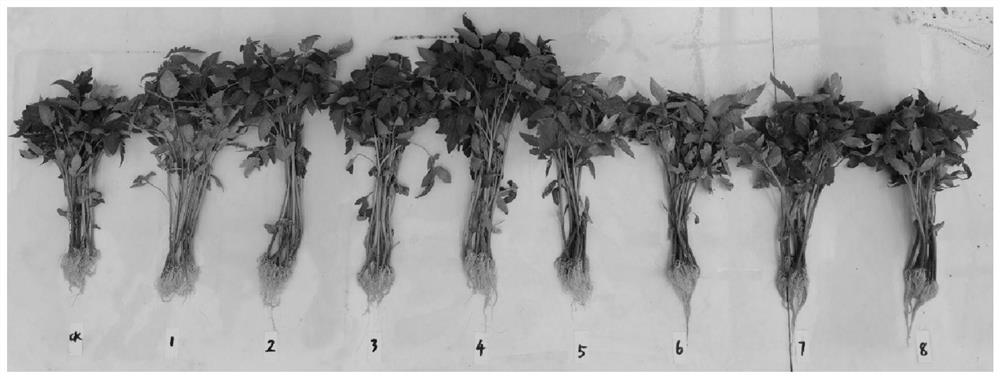Resourceful treatment method of stalk and vine type rotten vegetable leaves and seedling culture substrate prepared by resourceful treatment method
A treatment method and seedling raising substrate technology, which is applied in the direction of chemical fertilizer treatment control, organic fertilizer preparation, planting substrate, etc., can solve the problem of large amount of pathogenic bacteria, seldom and vine tail vegetable resource treatment methods are rarely reported, vine Problems such as the difficulty in the recycling of tail vegetables
- Summary
- Abstract
- Description
- Claims
- Application Information
AI Technical Summary
Problems solved by technology
Method used
Image
Examples
Embodiment 1
[0023] In this embodiment, the resource processing of stalks and vines tail vegetables is carried out according to the following steps:
[0024] S1: First, shred stalk and vine tail vegetables to particles of tail vegetables less than 5 cm by shredder and other equipment;
[0025] S2: The shredded tail vegetable particles are microwave sterilized for 10 minutes in a microwave sterilization line with a temperature of 80°C-90°C; Through a 10-meter-long microwave sterilization line.
[0026] The microbial content of the tail vegetable particles before and after microwave disinfection was compared, and the results are shown in Table 1.
[0027] Table 1:
[0028] deal with Bacteria (cfu / g) Fungi (cfu / g) Actinomycetes (cfu / g) Before disinfection 2.1×109 5.7×105 3.8×105 After disinfection 3.8×104 none 710
[0029] It can be found that after microwave disinfection, the microbial content in the tail vegetable granules is greatly reduced, which ca...
Embodiment 2
[0035] According to the method of Example 1, the effects of different mixing ratios on plant seedling growth were investigated respectively.
[0036] In step S4, the following formulations are mixed respectively;
[0037] 1) Decomposed products + vermiculite + peat + perlite = 4:3:2:1
[0038] 2) Decomposed products + vermiculite + peat + perlite = 5:2:2:1
[0039] 3) Decomposed products + vermiculite + peat + perlite = 6:1:2:1
[0040] 4) Decomposed products + vermiculite + peat + perlite = 7:0:2:1
[0041] 5) Decomposed products + vermiculite + peat + perlite = 3:3:3:1
[0042] 6) Decomposed products + vermiculite + peat + perlite = 4:2:3:1
[0043] 7) Decomposed products + vermiculite + peat + perlite = 5:1:3:1
[0044] 8) Decomposed products + vermiculite + peat + perlite = 6:0:3:1
[0045] 9) Seedling substrates purchased from the CK market
[0046] Investigate the seedling growth effect of three kinds of different kinds of vegetables of cucumber, tomato, cabbage r...
PUM
 Login to View More
Login to View More Abstract
Description
Claims
Application Information
 Login to View More
Login to View More - R&D
- Intellectual Property
- Life Sciences
- Materials
- Tech Scout
- Unparalleled Data Quality
- Higher Quality Content
- 60% Fewer Hallucinations
Browse by: Latest US Patents, China's latest patents, Technical Efficacy Thesaurus, Application Domain, Technology Topic, Popular Technical Reports.
© 2025 PatSnap. All rights reserved.Legal|Privacy policy|Modern Slavery Act Transparency Statement|Sitemap|About US| Contact US: help@patsnap.com



